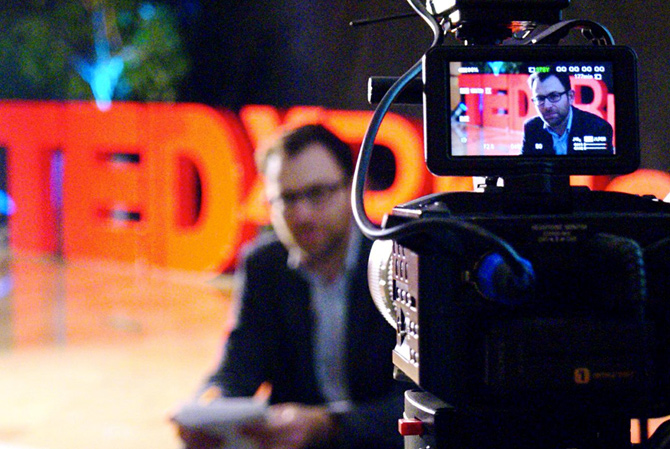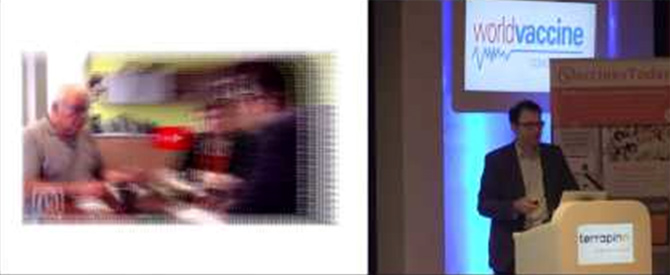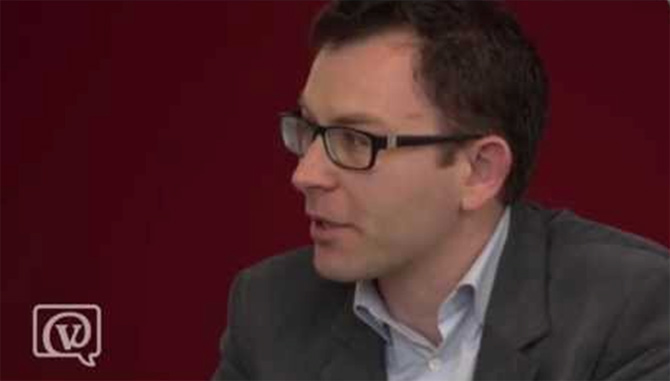Get up, have breakfast, tweet. Brush teeth, tweet, coffee, tweet.
By the time I get to my desk in the morning, I’ve usually scanned through my emails, checked Twitter twice, scoured the news and approved a few blog comments. (This morning I asked one of the kids if they have “brushed their tweet” – maybe I need a day off!)
Things move pretty fast in the online world so you’ve got to keep pace with what’s happening on social media while not getting so caught up in trivial and fleeting conversations that you forget to make strong content that stands out; content that can have a lasting impact.
I’m a digital reporter specializing in health. One of the projects I work on focuses on immunization an area where the science says “do it” but the gut says “are you sure?”
The problem is plain: The vast majority of people vaccinate; they take their doctors’ advice and show up on time to get the flu jab, or bring their kids in to be protected against measles.
But a small number of people opt out and that helps infectious diseases circulate in our communities. I badly want to be part of the community that solves this conundrum so that things like this just don’t happen anymore.
Doing what works

For a long time, people involved in communicating about vaccines reckoned that if they just fired enough factual information at the public, everyone would take the rational decision: they would vaccinate. This is called the deficit model of science communication.
But it turns out human beings don’t really work that way. We don’t sift through research data and come to logical conclusions about what’s good for us. We make decisions based on what we believe and what we feel; we want factual information, but also stories. We want answers to our questions and to be listened to.
And we process all of this through the lens of our own biases.
Screaming ‘Vaccines Don’t Cause Autism!‘ is scientifically proven to be worse than pointless: it’s actually counterproductive.
That’s what makes online media ideal for dealing with questions about health decisions. If putting posters on the walls of clinics or warnings on cigarette packs were effective, nobody would smoke. Or eat badly. Or get infectious diseases.
The old one-way communication model is broken. There’s no use shouting louder – just try something new. Try listening. Try building a reputation. Try earning trust.
Joining the conversation
I run Vaccines Today. It’s a blog, a Twitter account, a Facebook page, and a YouTube channel. It’s whatever it takes to engage with people about immunization. The medium doesn’t matter; wherever people are talking about vaccines or children’s health or flu jabs, we’ll be there participating in the conversation.
Sometimes I write short blogs about a current news story, other days it’s a longer feature with expert interviews, or a guest post by a parent affected by vaccine-preventable diseases.
And we make a lot of videos which, from my perspective, makes things interesting and varied. This can mean standing in a train station quizzing people about travel health, running around interviewing researchers at conferences or sitting down to chat with experts from the World Health Organization and American Medical Association.

A long road
“Congratulations on your work anniversary!” an automated LinkedIn message reminded me this week that I’ve been at this for four years now. It made me think of how far we’ve come in that short period.
In 2010, I was working as a print journalist. I was a Twitter novice, mildly skeptical about the power of blogging, and unsure whether we could create an immunization media brand from nothing.
In the early days, I remember going to a vaccines conference in France to write articles, make videos and fire out a few tweets. Getting people to agree to video interviews for our YouTube channel was a chore. They hadn’t heard of Vaccines Today; they didn’t consider it journalism; and they doubted a video interview would have any impact.
Fast-forward a few years and I found myself at the same event last week. Now, hundreds of thousands of page views later, the tables have turned. These days we are inundated with people wanting to be interviewed. It was a struggle to keep up! In a relatively short period, we have become a well-known medium, albeit in the relatively small world of immunization.
Where we used to have to pester press officers to answer our questions; they now send us information asking if we’d tweet about it; no longer do we have to beg for a media pass for conferences, now we are invited – and sometimes even asked to speak about vaccines and communication.
Persistence pays

Although it’s a big shift, it didn’t happen overnight and it wasn’t simple. It took persistence.
The site is now independently endorsed by Health on the Net and features in the WHO’s list of trustworthy vaccination websites so we have earned credibility over time. That makes a big difference when someone questions whether you should have a voice in the debate at all.
Pretty much every serious organization in this field knows us, thanks to Twitter and our blog. Thanks to Facebook, more and more members of the public are getting to know us too.
We have tried lots of different styles of content, looked at what worked, and did more of the good stuff. We made videos that informed and explained but also gave parents a platform to tell their stories, and we engaged with people on Twitter.
I feel really strongly about vaccination and about communicating in a way that works. Insisting that other people accept your evidence-based medicine will get you nowhere.
Apply a little evidence-based communication, mix in a healthy dose of humility, a dollop of humanity, half an ounce of humor – and serve on a platform of social media.











